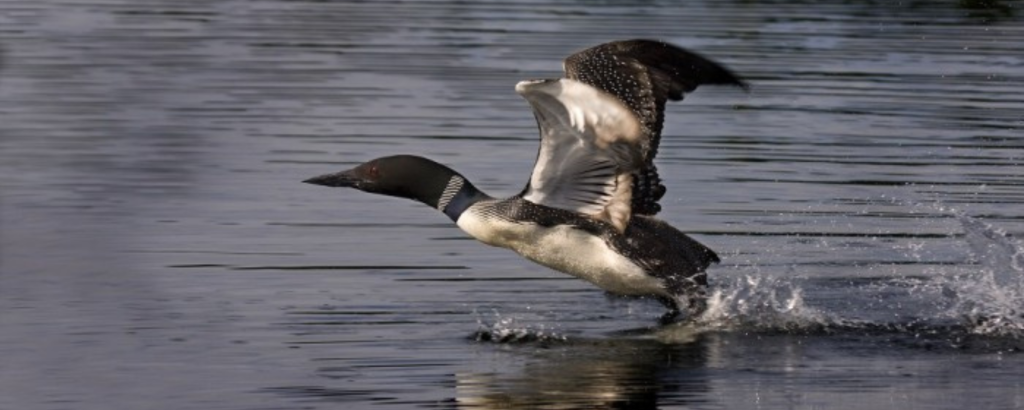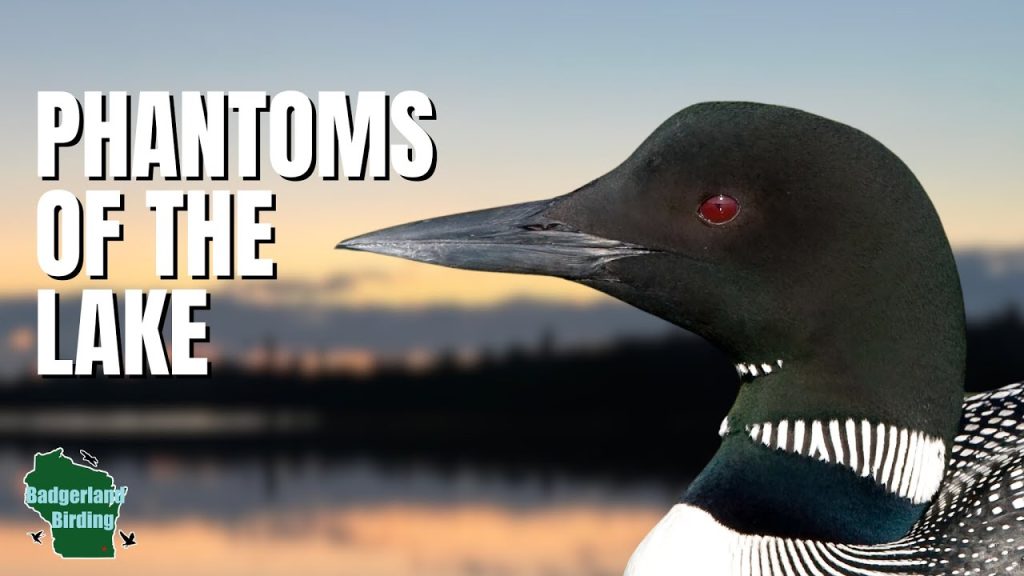Have you ever heard a haunting, echoing sound over a quiet lake and wondered what it was? That’s the call of the loon bird—a mysterious and beautiful sound that can instantly transport you to nature’s calm.
If you want to learn how to recognize this unique bird call and understand why it captures the hearts of so many, you’re in the right place. Keep reading, and soon you’ll be able to identify the loon’s call, adding a new layer of magic to your outdoor adventures.

Credit: blog.ontarioparks.ca
Loon Bird Sounds
Loons are birds known for their loud, eerie calls. These sounds echo over lakes and are easy to recognize. People often hear them during quiet evenings near water.
Loons use different types of calls to communicate. Each call has a special meaning for other loons nearby.
Types Of Calls
Loons make several types of calls. Each call sounds different and serves a unique purpose. The main calls are wail, tremolo, yodel, and hoot.
- Wail:A long, haunting call. It helps loons find each other across large lakes.
- Tremolo:A fast, wavering sound. It warns of danger or shows nervousness.
- Yodel:A loud, complex call made by males. It defends territory from other loons.
- Hoot:A soft, short sound. Loons use it to talk to family members nearby.
How Loons Use Their Calls
Loons use their calls to stay safe and keep in touch. The calls help them find mates and protect their homes.
Calls also help loons warn each other about threats. They use softer sounds to talk quietly with family.
- Locate other loons across large lakes
- Signal danger or alert others
- Defend territory from intruders
- Communicate quietly with mates and chicks
Loon Habitat
Loons live near water in places with clear lakes and ponds. They need clean water to catch fish easily.
These birds build nests close to shorelines. They prefer quiet areas with little human activity.
Preferred Environments
Loons choose freshwater lakes and large ponds with clear water. They like areas with many fish to eat.
Loons avoid muddy or shallow waters. They also need shorelines with trees or shrubs for nesting.
- Clear freshwater lakes or large ponds
- Low human disturbance
- Shorelines with trees or shrubs
- Abundant fish for food
- Quiet and natural surroundings
Seasonal Movements
Loons migrate to different places during the year. They spend summers in northern lakes and winters on coasts.
In spring, loons fly north to breed. In fall, they head south to find open water for winter.
- Summer: Northern freshwater lakes for breeding
- Fall: Migrate south to coastal waters
- Winter: Coastal oceans with open water
- Spring: Return north to breeding sites
Role In Ecosystem
The loon bird call plays an important role in the ecosystem. It helps loons communicate and survive in their natural habitat.
Loons use their calls to interact with each other and protect their territory. These sounds also help them find mates.
Communication And Territory
Loons use their calls to talk to other loons nearby. The calls warn others to stay away from their space.
This helps reduce fights and keeps their nesting areas safe. Each call signals different messages about territory.
- Warning calls keep other loons away
- Soft calls help parents and chicks stay close
- Loud calls mark the boundary of a loon’s home
Attracting Mates
Male loons use their calls to attract female loons during breeding season. The calls show strength and health.
Clear and strong calls help males find a mate and start a family. Females listen carefully to choose the best partner.
- Calls show fitness to females
- Help form bonds between mates
- Signal readiness to mate and raise chicks

Credit: www.willyswilderness.org
Cultural Significance
The loon bird call is a unique sound found in many northern lakes. It holds deep meaning for many cultures.
People have long listened to the loon call as a symbol of nature and peace. It connects them to the wild.
Folklore And Legends
Many Native American tribes tell stories about the loon bird. These tales explain how the loon got its call.
In some legends, the loon is a messenger between the spirit world and humans. Its call guides lost souls home.
- The loon is seen as a symbol of protection in some stories.
- Its call is believed to bring calm and comfort to people.
- Some legends say the loon’s call can warn of danger nearby.
Symbolism In Art And Music
Artists often use the loon bird call to show nature’s beauty. It appears in paintings and carvings.
Musicians also use loon calls in their songs. The sound adds a peaceful and natural feeling to the music.
- The loon call represents calm lakes and quiet forests.
- It stands for solitude and reflection in art.
- Musical pieces with loon sounds often tell stories of nature.
Conservation Efforts
The loon is a unique bird known for its eerie call and striking appearance. Protecting loons is important for keeping healthy lake ecosystems.
Many groups work together to save loons. They focus on keeping loon habitats safe and reducing dangers.
Threats To Loons
Loons face many dangers in the wild. Pollution, habitat loss, and fishing gear cause harm to loons.
Human activities near lakes can disturb loons. Noise and boats make it hard for loons to nest and feed.
- Water pollution poisons loon food
- Fishing lines trap and injure loons
- Boats destroy nests on shorelines
- Loss of wetlands reduces loon homes
- Climate change changes fish populations
Protective Measures
Many actions help protect loons and their homes. Laws and education teach people how to avoid harming loons.
Conservation groups create safe zones on lakes. These areas limit boat traffic and human activity during nesting season.
- Use loon-friendly fishing gear
- Keep a safe distance from nesting sites
- Reduce pollution by cleaning lakes
- Restore wetlands and natural habitats
- Support laws that protect wildlife

Credit: www.youtube.com
Experiencing Loon Calls
The call of the loon is a unique sound found near lakes and rivers. It is often described as haunting and beautiful. Many people enjoy listening to loon calls to connect with nature.
Hearing a loon call can bring a sense of calm and peace. It is a special experience that lets you feel close to wildlife in quiet places.
Best Times To Listen
Loons call most often in the early morning and late evening. These times are quieter and help you hear their calls clearly. Summer months are the best season to listen to loons.
- Early morning, just before sunrise
- Late evening, around sunset
- Summer months, especially June to August
- Near clear lakes with little noise
Recording Tips
To record loon calls, use a good microphone and find a quiet spot. Keep your distance to avoid scaring the birds. Try to record during the best times to listen.
- Use a directional microphone for clear sound
- Stay at least 50 feet away from the loons
- Record during early morning or late evening
- Reduce background noise by turning off devices
Frequently Asked Questions
What Does A Loon Bird Call Sound Like?
A loon bird call is eerie and haunting. It consists of wails, tremolos, and yodels. These sounds echo across lakes, especially at dusk and dawn.
Why Do Loons Make Their Distinctive Calls?
Loons use calls to communicate. They mark territory, attract mates, and signal danger. Each call serves a specific social function in loon behavior.
When Is The Best Time To Hear Loon Calls?
The best time to hear loon calls is early morning and late evening. Loons are most vocal during breeding season in spring and summer.
How Can I Identify A Loon By Its Call?
Loon calls are unique with three main types: wail, tremolo, and yodel. Learning these sounds helps identify loons from other water birds.
Conclusion
The loon bird call is unique and hauntingly beautiful. It echoes across lakes and forests, creating a peaceful atmosphere. Many people enjoy listening to it during quiet evenings. The call helps loons communicate with each other in the wild. It also reminds us of nature’s calm and mystery.
Next time you hear a loon’s call, take a moment to appreciate its simple charm. Nature speaks in many ways, and the loon’s song is one of the clearest voices.

